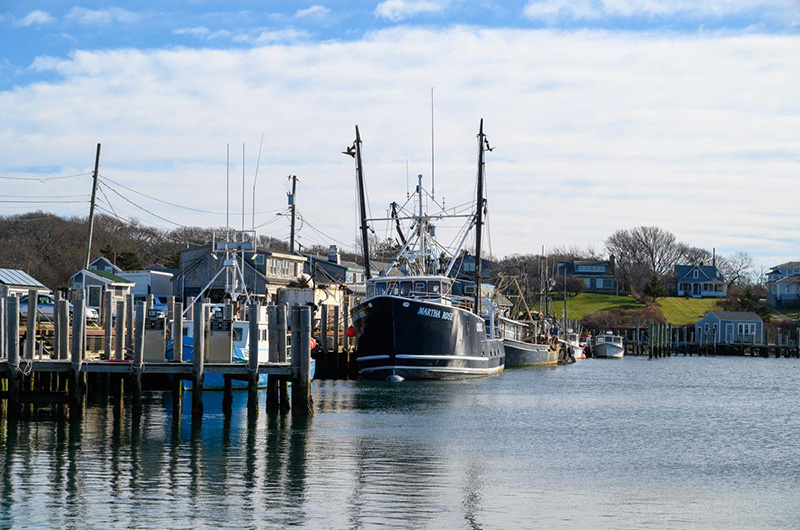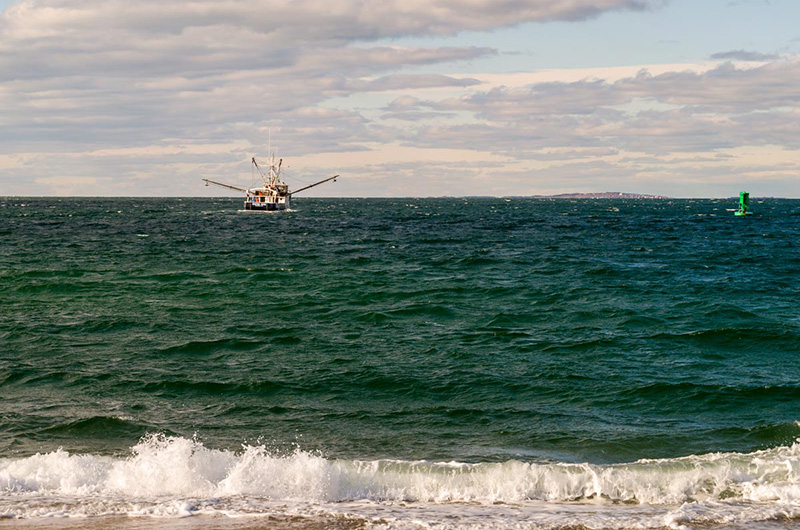The Martha Rose, a 77-foot sea scalloper with a rich history, had her maiden voyage this week as the newest member of the Menemsha fleet.
The boat is captained by Wes Brighton, a well-known fisherman on the Dutcher Dock, and will employ a crew of three.
Speaking to the Gazette by phone this week, Mr. Brighton described the vessel’s long history. “It started off as a long liner in Bayou La Batre, Alabama in 1980 . . . going for tuna and swordfish,” he said. “In 1984 they put winches on it, a gallows frame, strengthened the deck to land the heavy dredges . . . and turned it into a scalloper.”
The boat eventually made her way up the coast to New Jersey, where she joined a small fleet of sea scallopers in a harbor known as Viking Village at the tip of Barnegat Light. Most of the boats in the village are owned by a family with Norwegian roots with the name Larson — not to be confused with the Larsens of Menemsha, Mr. Brighton said.
She was originally named the Lindsay L., though Mr. Brighton said the name was changed briefly to Hannah Boden for her role in the 2000 film The Perfect Storm.
“It had just come out of the yard and was all freshly painted,” he said. “And the Hollywood crew had to paint rust back on to give it that look.”
Hannah Boden was a sister ship of the Andrea Gail, which sank in the eponymous 1991 storm. In the film, which is based on the nonfiction novel by Sebastian Junger, the captain of the Hannah Boden warned crew members aboard the Andrea Gail of the impending storm before they set out on their final voyage.
Mr. Brighton bought the boat in October and has spent the last two months welding, fixing the deck plates, upgrading the electronics and painting the vessel. It has been a lot of work to bring it back to seaworthy condition, and he said more work lies ahead as he hopes to eventually obtain a full sea scalloping permit.
“It has a general category permit [with a catch limit of] 600 pounds a day . . . but we’re hoping to get a bigger permit to put on the vessel if we’re lucky enough to find one available,” he said. “There are only 253 full-time scalloping permits out there. They’re very expensive and it’s very difficult to find one.”
He said despite the challenges, sea scalloping can be a worthwhile venture. “It is well managed because there are only a certain amount of people that can go fish for them. It’s sustainable and very well monitored,” he said.
The large fleet of draggers that once filled Menemsha harbor has dwindled in recent years, partly due to a changing offshore fishery and the difficulty for small fishermen in navigating a complicated and expensive maze of government-controlled fishing permits.
Mr. Brighton said his new vessel tied to the slip in front of the Menemsha Fish House doesn’t reflect a changing tide in the problems that plague the industry, but he hopes it will bring jobs to the waterfront.
“The more permits we can get back to our community, the more opportunity there will be for local people to bring in local food and good paying fishing jobs in a sustainable way,” he said.
The Martha Rose made her first voyage on Jan. 1.
“It’s been a hard last few decades and there are still many challenges facing the industry,” Mr. Brighton concluded. “But fish are largely rebounding because of such stringent regulations that were put in place. . . The hope is that there are more opportunities for the younger generations in the decades to come.”









Comments (12)
Comments
Comment policy »